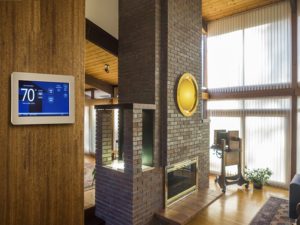Well the garden centers are getting ready for spring with all of the lights, ornaments, and containers. As I get older many annuals are going into containers making it easier to take care of plus the added bonus that you can move them around when you get tired of looking at them in the same space.
You can grow flowers, herbs, and even vegetables in pots. No space? No problem!
Pots, tubs, and half barrels overflowing with flowers add appeal to any garden, but container gardening can serve a practical purpose too. Container gardening is ideal for those with little or no garden space. In addition to growing flowers, gardeners limited to a small yard or only a patch of sun on their driveway can produce a wide variety of vegetable crops in containers. I grow basil, chives, thyme, rosemary and other herbs also are quite happy growing in pots better than in the garden soil, then I bring them in for the winter and keep them on the porch where it is cool and sunny.
Container gardening also adds versatility to gardens large and small. Plants lend instant color, provide a focal point in the garden, or tie in the architecture of the house to the garden. Place them on the ground or on a pedestal, mount them on a windowsill, or hang them from your porch. I know a pair of matching containers on either side of the front walk serves as a welcoming decoration, while container gardening on a deck or patio can add color and ambiance to such outdoor sitting areas. You can use single large containers for outdoor decoration, but also consider arranging groups of pots, both small and large, on stairways, terraces, or anywhere in the garden. A cinder block can contain a collection of my favorite plants, cactus and succulents. Houseplants summering outdoors in the shade also make a handsome addition to container gardening. Window boxes and hanging baskets hanging from the tree limbs like fuchsia basket hanging from the willow tree offer even more ways to add instant color and appeal.
Containers planted with a single species—rosemary or a bold variegated ornamental grass, for example—can be stunning garden accents. Containers planted with a mix of plants are fun to create and offer almost unlimited possibilities of combinations. The best combinations depend on plants that feature handsome foliage and flowers produced over a long bloom season. One easy guideline for choosing the plants to combine in a container is to include “a thriller, a spiller, and a filler.” That translates to at least one focal-point plant (the thriller), such as coleus or a geranium with multicolored leaves, for example, combined with several plants that spill over the edge of the pots—such as petunias, bacopa , creeping zinnias, or ornamental sweet potatoes. Finally, add the fillers, which are plants with smaller leaves and flowers that add color and fill in the arrangement all season long. Good fillers include salvias, verbenas, ornamental peppers, and wax begonias, as well as foliage plants like parsley or licorice plants. You may also want to include a plant for height, such as an ornamental grass like purple fountain grass. Add a trellis or pillar to a container and you can use a vine to add height to the composition. You’ll need a total of five or six plants for an 18- or 24-inch container, for example.
Start a bunch of radish seeds early in the spring in a container like an old wash basin and bring indoors or in the garage during a cold night. Harvest them in less than a month. Any vegetable can be grown in a container.
Container Sizes
Keep in mind that it’s easier to grow plants in large containers than small ones. That’s because large containers hold more soil, which stays moist longer and is less subject to rapid temperature fluctuations. Small hanging baskets are especially prone to drying out, and during hot, windy summer weather, you may have to water them twice a day to keep plants alive.
It’s also important to decide what plant you want to grow in each container. Several factors help determine how large and deep the container must be. Consider the size and shape of a plant’s root system; whether it is a perennial, annual, or tender shrub; and how rapidly it grows. Rootbound plants, which have filled up every square inch of the soil available, dry out rapidly and won’t grow well. Choose a large pot or tub for a mixed planting, one that will offer enough root space for all the plants you want to grow. Light-colored containers keep the soil cooler than dark containers.
The maximum size (and weight) of a container is limited by how much room you have, what will support it, and whether you plan to move it. If your container garden is located on a balcony or deck, be sure to check how much weight the structure will safely hold.
Container Drainage
Whatever container you choose, drainage holes are essential. Without drainage, soil will become waterlogged and plants may die. The holes need not be large, but there must be enough so that excess water can drain out. If a container has no holes, try drilling some yourself. A container without holes is best used as a cachepot, or cover, to hide a plain pot. Cachepots (with holes and without them) are useful for managing large plants and heavy pots: Grow your plant in an ordinary nursery pot that fits inside a decorative cachepot so you can move them separately.
Self-watering, double-walled containers, hanging baskets, and window boxes are available. These are a useful option for dealing with smaller plants that need frequent watering.




